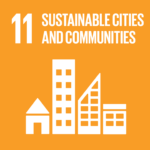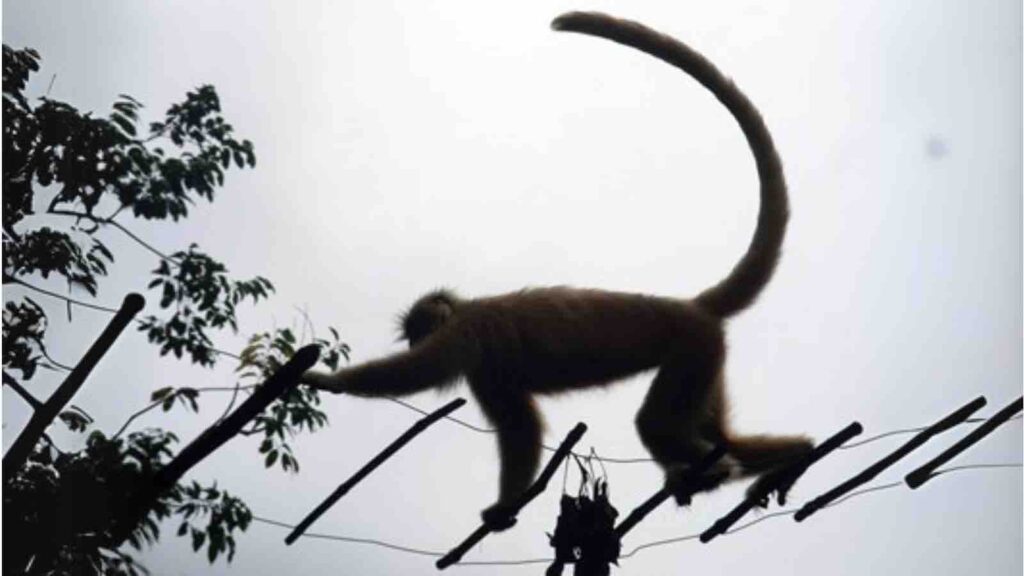In Assam, hanging bridges help golden langurs swing above the perils of development.
BONGAIGAON, INDIA — When golden langurs began using Assam’s newly built canopy bridges just five days after their installation, the sight was more than heartwarming — it was historic.
As highways stretch through India’s verdant wilderness and power lines cross ancient trees, Assam is quietly rewriting the rules of development with compassion. In Bongaigaon district, a pioneering wildlife conservation initiative is providing endangered primates like golden langurs and hoolock gibbons a safer passage across man-made obstacles — by building canopy bridges above National Highway 117.
RELEVANT SUSTAINABLE GOALS


Saving Lives One Bridge at a Time
These “hanging bridges” — made from sturdy, plastic-coated wires — serve a clear and urgent purpose: to reduce the rising toll of road accidents and electrocutions that plague arboreal wildlife trying to cross fragmented habitats.
For the golden langurs, an endangered species found only in a narrow belt of forest straddling India and Bhutan, the stakes couldn’t be higher. Every crossing attempt across busy roads or beneath power lines was a risk to life — until now.
“This project is not just about conservation,” said a senior official from the Assam Forest Department. “It’s about finding harmony between infrastructure growth and the preservation of biodiversity.”
Engineering Coexistence in a Fragmented Landscape
The canopy bridge project is a joint initiative involving the Assam Forest Department, the local administration, the National Highways and Infrastructure Development Corporation Limited (NHIDCL), and local communities. This collaborative effort underscores a growing recognition that conservation cannot be siloed — it must be integrated with development planning.
Over National Highway 117, four canopy bridges have been strategically installed in key wildlife corridors known to be frequented by langurs. The placement wasn’t random; it was guided by years of field data and behavioral observation.
“Development often divides animal territories,” said a conservationist familiar with the project. “These bridges reconnect them.”
Golden Langurs Lead the Way
That the golden langurs were spotted using the first canopy bridge mere days after its completion was a milestone. It affirmed the value of low-tech, high-impact interventions and brought visibility to the often-overlooked threat of habitat fragmentation.
Unlike overpasses built for elephants or underpasses for tigers, these canopy bridges cater specifically to tree-dwelling species that depend on the forest canopy for travel, food, and safety.
Their success sets a precedent for similar measures in other biodiversity-rich areas of India, where development increasingly intersects with critical wildlife habitats.
Assam’s bold move reflects a growing global trend: using green infrastructure to balance ecological integrity with economic progress. From Costa Rica to Australia, canopy bridges have been deployed with success. India, with its dense network of roads and power lines passing through natural habitats, now has a model that is both replicable and effective.
More importantly, this initiative sends a message — that wildlife conservation isn’t a hindrance to development; it is an essential part of it.
Looking Ahead: Bridges to a Shared Future
Local participation has been integral. Villagers who once witnessed langurs electrocuted or run over are now guardians of the bridges. Awareness campaigns and public engagement have turned community members into active stakeholders in protecting their natural heritage.
“People here feel proud,” said a community liaison officer. “They feel like they’re doing something meaningful for the animals they’ve lived alongside for generations.”
With India’s infrastructure expanding rapidly, the question is not whether development will continue — it will. The challenge is whether it can be designed to accommodate all who call these forests home.
Assam’s canopy bridges are a small but mighty answer. They offer a path forward — not just for langurs and gibbons, but for a development paradigm that finally includes the voices of the voiceless.
And in the quiet rustle of leaves above Highway 117, as a golden langur swings confidently across a new bridge, we are reminded that every life saved is a victory — not just for conservation, but for conscience.
You may also be interested in :
How Google Earth is Helping To Save Southeast Asia’s Sun Bears




